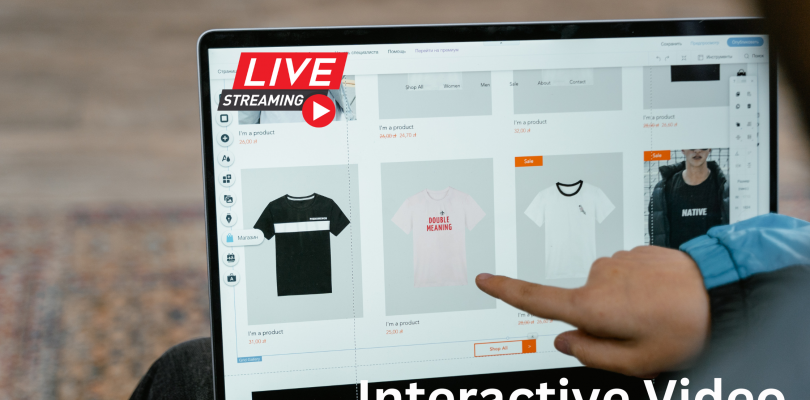If you are looking to take your video marketing to the next level and engage audiences with digital experiences that drive conversation, interactive video is the vehicle to do that. In this article we will define what interactive video is, how to use it, the KPIs to measure success and the most common use cases.
What is interactive video?
Interactive video is a form of multimedia content that allows viewers to actively engage with the video’s elements, such as clicking on hotspots, making choices, and participating in polls or quizzes. With the increasing popularity of digital devices and the internet, interactive videos have emerged as a powerful tool for engaging and educating viewers.
One of the primary benefits of interactive video is its ability to provide personalized learning experiences. Interactive videos can be designed to cater to different learning styles and levels, allowing users to interact with the content at their own pace and level of understanding. For example, a language learning video can include interactive elements such as subtitles, translation, and quizzes to help users learn and practice new words and phrases.
Interactive Video Software Buyer’s Guide
Another use case of interactive video is in marketing and advertising. Interactive videos can provide an immersive and engaging experience for customers, leading to higher engagement rates and brand recall. For example, an interactive video ad for a new car model could allow users to explore the car’s features, customize its color, and take a virtual test drive.
Interactive videos are also being used in corporate training and employee onboarding. With the shift towards remote work, interactive videos provide an effective way to train and educate employees without the need for in-person training sessions. Interactive videos can be used to simulate real-life scenarios and allow employees to practice and learn new skills in a safe and controlled environment.
Interactive videos can also be used for entertainment purposes, such as interactive movies or games. Interactive movies allow viewers to choose their own storyline or ending, providing a unique and personalized viewing experience. Interactive games, on the other hand, can allow users to control the characters and storyline, making them active participants in the game’s narrative.
How To Make an Interactive Video
The types of interactive video
There are several types of interactive videos that are commonly used, each with its own unique features and benefits. Here are some of the most common types of interactive videos:
Quizzes and polls
These types of interactive videos allow viewers to answer questions and provide feedback, making the learning experience more engaging and interactive.
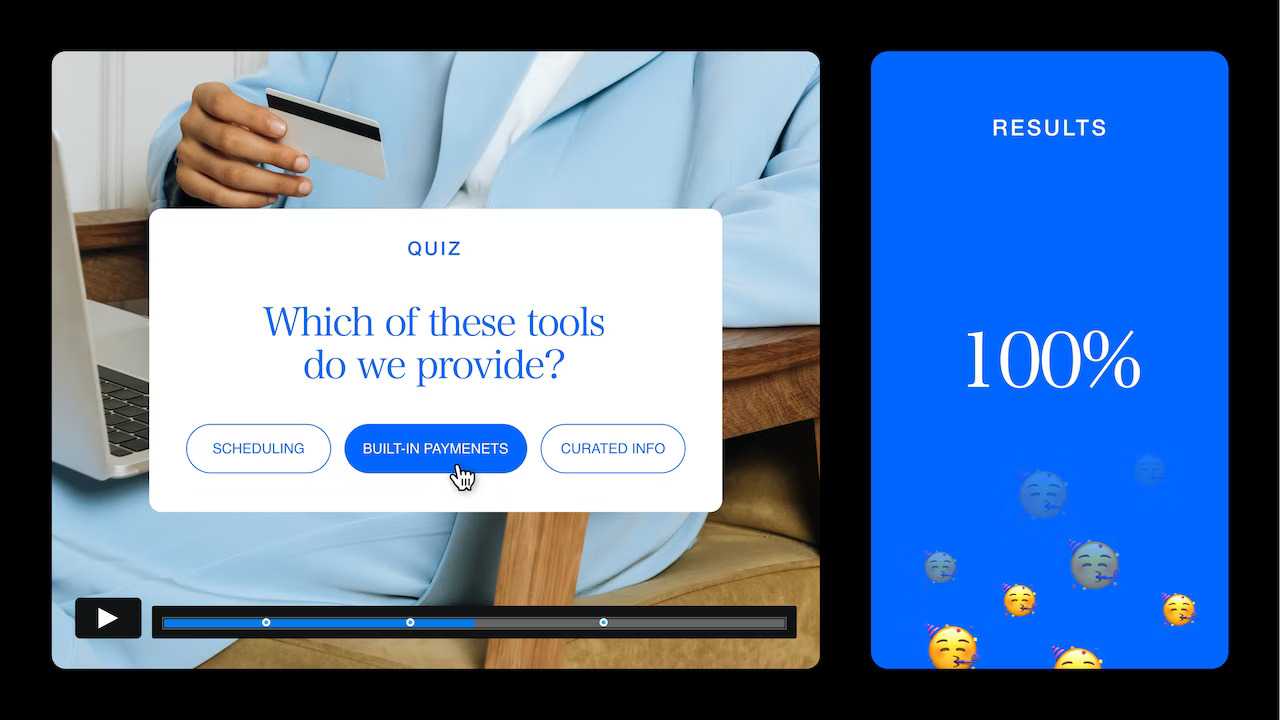
Choose-your-own-adventure videos (branching)
This type of interactive video allows viewers to make choices that affect the outcome of the video. It is commonly used in entertainment, marketing, and education. Branching videos allow viewers to choose their own path through the video, providing a personalized and interactive experience.
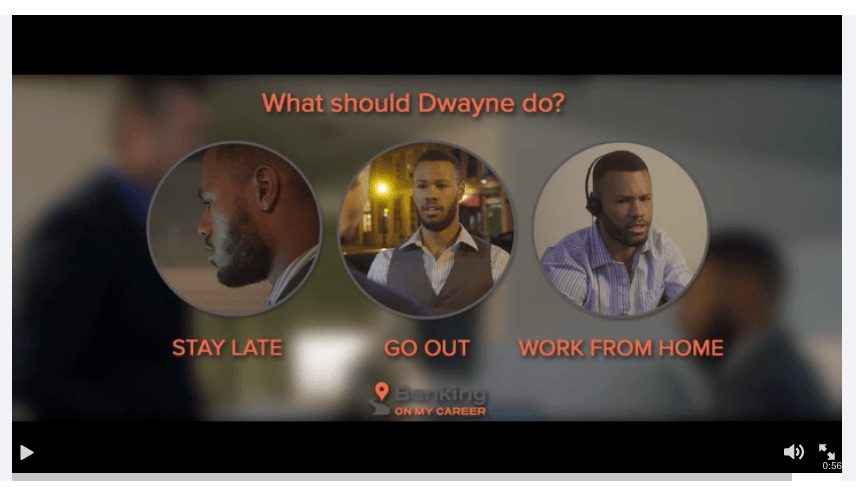
Hotspot videos
Hotspot videos allow viewers to click on specific parts of the video to access additional information, such as product details or related content.

VR and 360-degree videos
VR and 360-degree videos provide an immersive and interactive experience, allowing viewers to explore and interact with the environment.
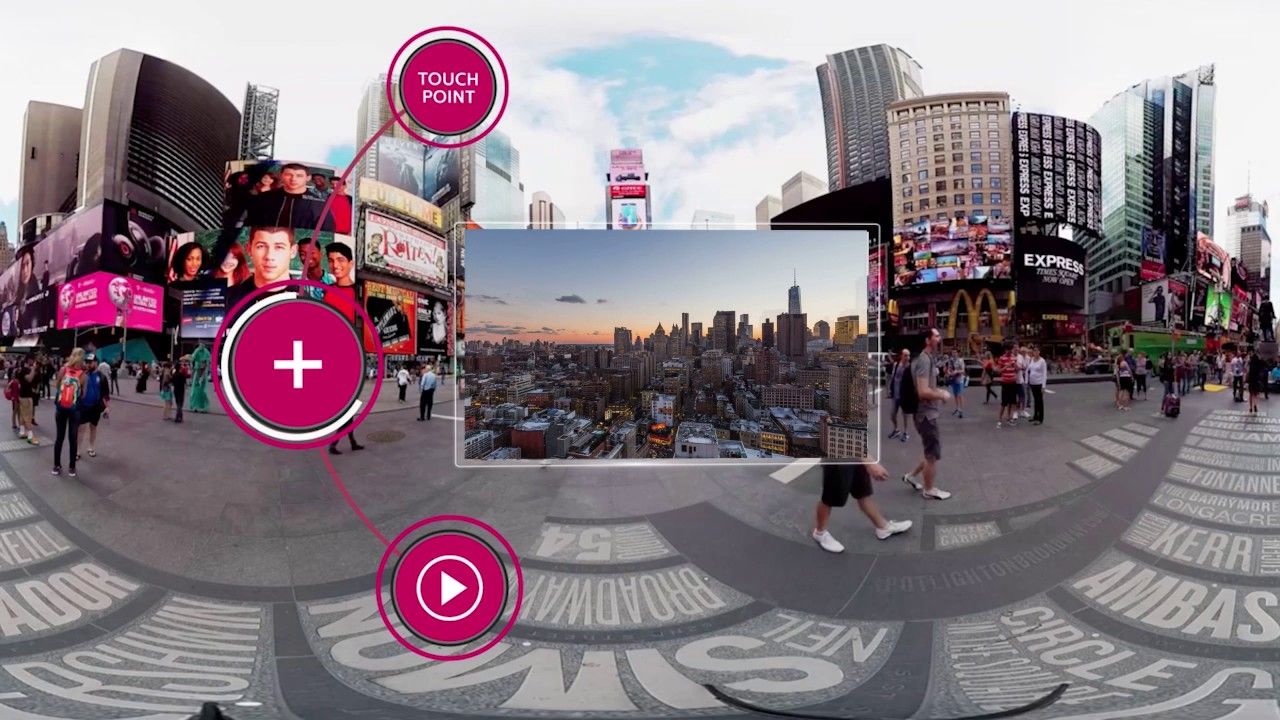
Interactive whiteboard videos
Interactive whiteboard videos are used in education and training to illustrate concepts and ideas, allowing viewers to follow along and interact with the content.

Interactive product demos
Interactive product demos allow viewers to explore and interact with a product, providing a more engaging and immersive experience than traditional product demos.

Each type of interactive video has its own unique benefits and use cases. By understanding the different types of interactive videos, businesses and organizations can choose the best format for their specific needs and goals.
Live streams can also be interactive
Live streams can also be interactive. In fact, interactive live streaming is becoming increasingly popular as it allows viewers to engage with the content and creators in real-time.
There are several ways to make live streams interactive, including:
Live chat
Live chat allows viewers to send messages and ask questions during the stream. Creators can respond to these messages, making the experience more interactive and engaging.
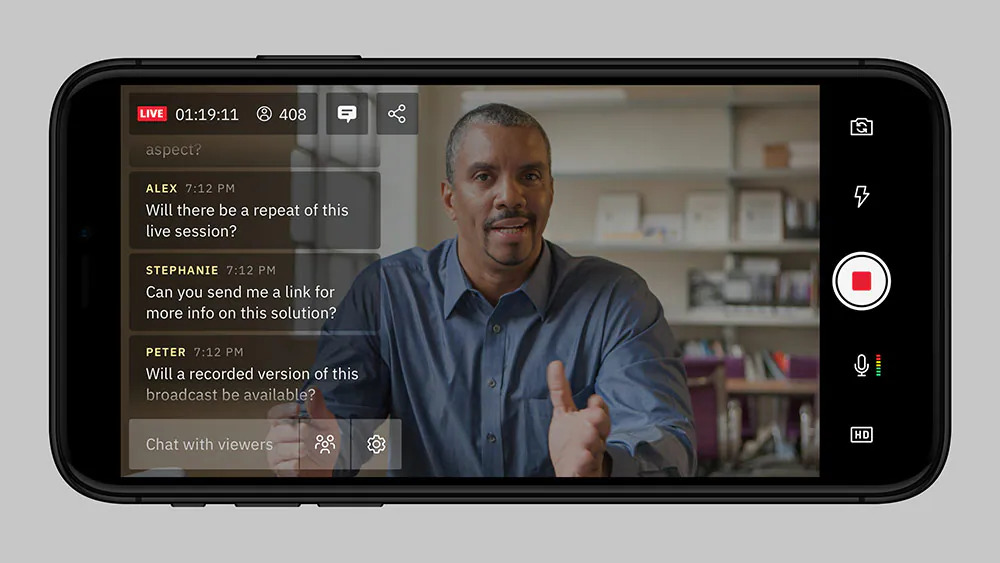
Polls and quizzes
Creators can use polls and quizzes during the live stream to engage viewers and gather feedback.
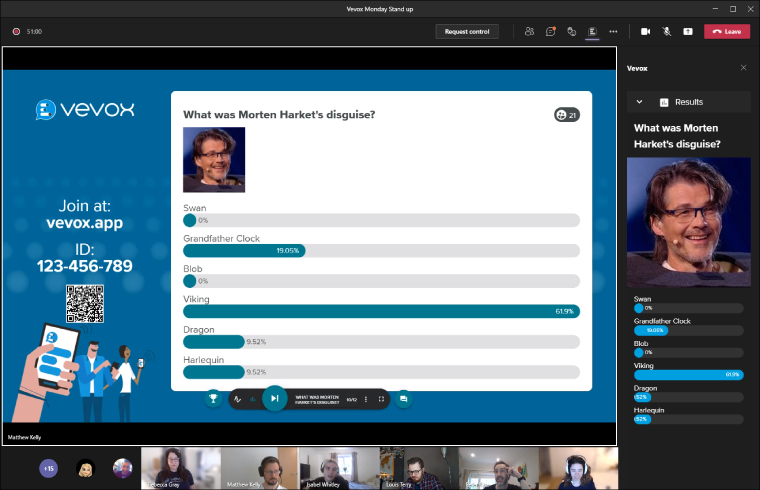
Q&A sessions
Creators can dedicate a portion of the live stream to answering questions from viewers, providing a personalized and interactive experience.

Interactive live streaming has many benefits, including increased engagement and audience participation, which can lead to higher viewership and brand awareness. It can also help creators build a community and establish a more personal connection with their audience.
How To Produce Interactive Videos That Engage Viewers
Live stream shopping & shoppable video
Live shopping, also known as live stream shopping, is an emerging trend in e-commerce where retailers use live streaming videos to showcase and sell products to customers in real-time. It’s a form of social commerce that combines the convenience of online shopping with the excitement of live events.
Video Commerce Guide: What is Livestream Shopping?
To make live shopping interactive, it’s important to engage with your audience and create a personalized experience that encourages participation and feedback. Here are some tips for making live shopping more interactive:
Encourage viewer participation
Encourage viewers to ask questions, provide feedback, and engage with the host during the live stream. This can be done through live chat, polls, or other interactive features.

Use interactive tools
Many live stream shopping platforms offer interactive shopping functionality and integrate with popular web stores. Via hotspots and other interactive elements viewers are prompted to add items to their shopping carts and make a purchase.
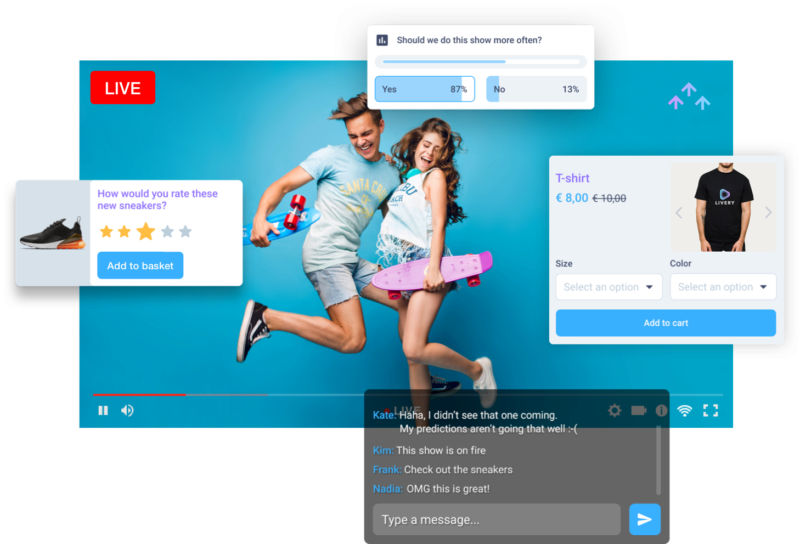
Provide exclusive offers
Offer exclusive discounts, promotions, or freebies to viewers during the live stream. This can encourage viewers to make a purchase and create a sense of urgency.

Showcase product features
Demonstrate the features and benefits of the products being sold and show them in action. This can help viewers understand the products better and make informed purchase decisions.
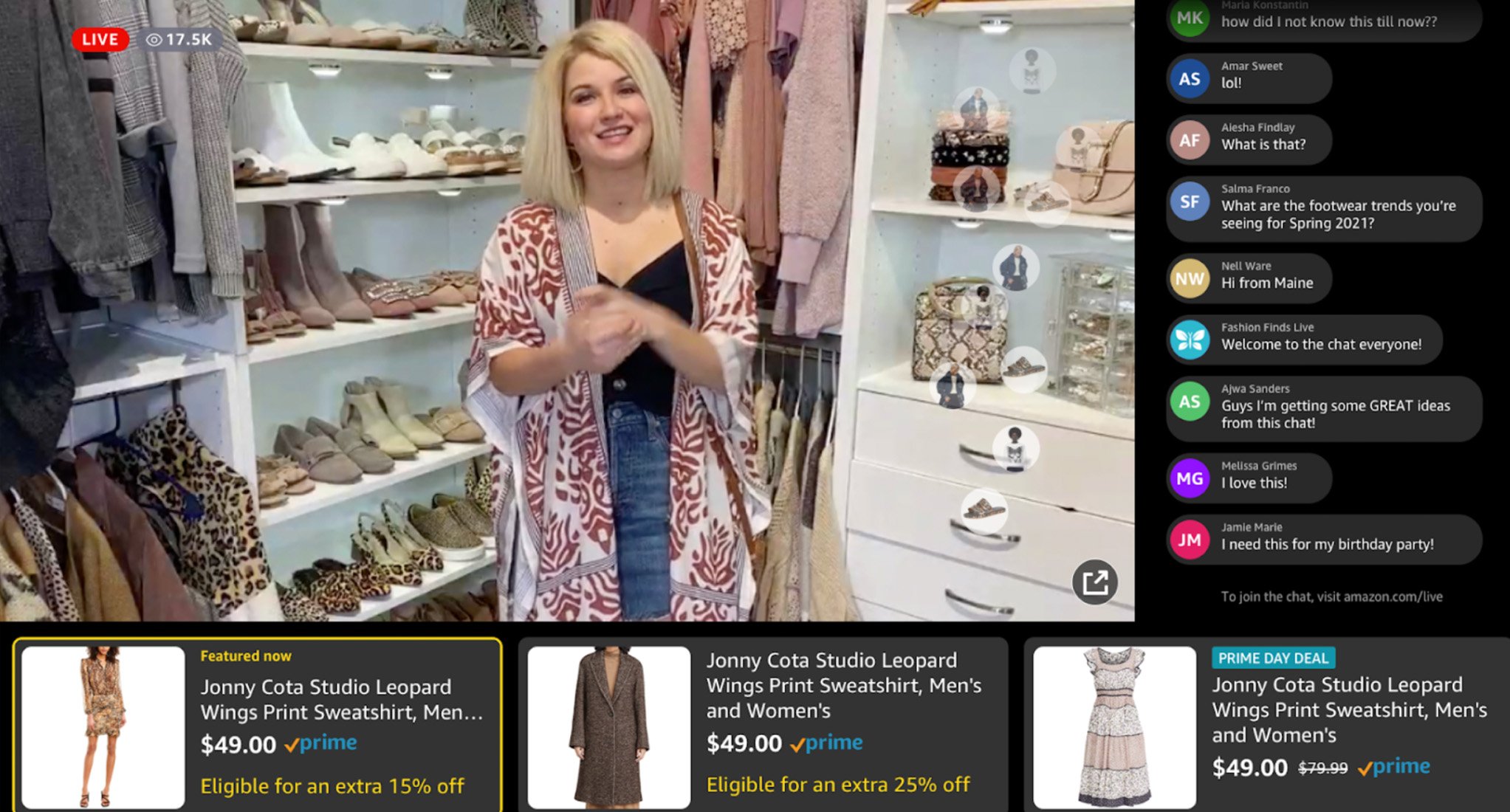
Collaborate with influencers
Partner with influencers or brand ambassadors to showcase products and reach a wider audience. This can also create a more engaging and personalized experience for viewers.
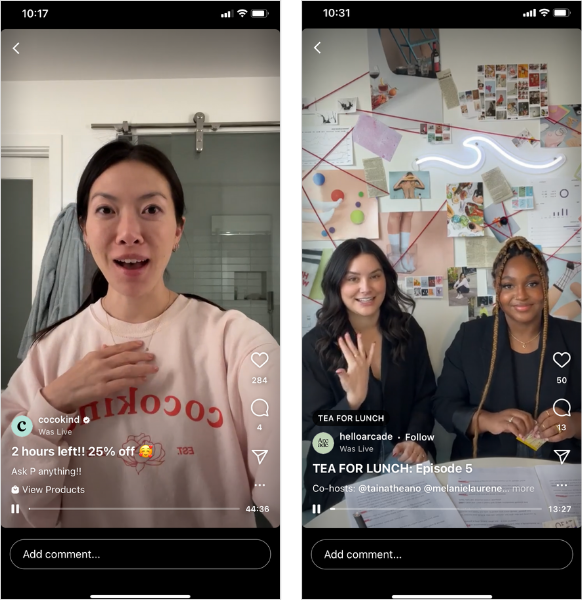
Incorporate customer feedback
Listen to feedback from viewers and use it to improve the live shopping experience. This can help build trust and loyalty with your audience.

Top 10 Free Interactive Video Tools For Marketers
How to make sense of interactive video analytics
Measuring the success of an interactive video involves tracking several metrics to determine the effectiveness of the content and the engagement of the audience. Here are some key metrics to consider when measuring the success of an interactive video:
Engagement rate: The engagement rate measures the percentage of viewers who interact with the video in some way, such as clicking on interactive elements or completing a call-to-action. A higher engagement rate generally indicates a more successful interactive video.
Click-through rate (CTR): The CTR measures the percentage of viewers who click on a call-to-action or other interactive element in the video. A higher CTR indicates that the call-to-action is effective and resonates with the audience.
Time spent watching: The time spent watching metric measures the total amount of time that viewers spend watching the video. A longer viewing time generally indicates that the content is engaging and resonates with the audience.
The Key Video Metrics To Track & Measure Success
Conversion rate: The conversion rate measures the percentage of viewers who take a desired action after watching the video, such as making a purchase or filling out a form. A higher conversion rate indicates that the video is effective at driving desired behaviors.
Completion rate: The completion rate measures the percentage of learners who complete the training video. A higher completion rate generally indicates that the content is engaging and resonates with the learners.
Retention rate: The retention rate measures how well learners retain the information presented in the training video. This can be measured through assessments or quizzes that are integrated into the video. A higher retention rate indicates that the video effectively conveys important information to the learners.
Engagement rate: The engagement rate measures the percentage of learners who interact with the video in some way, such as answering questions or participating in interactive elements. A higher engagement rate generally indicates that the video is effective at keeping learners engaged and interested.
Performance improvement: Measuring the performance improvement of learners who have completed the training video can be a useful way to determine the effectiveness of the video. This can be done by comparing the performance of learners before and after completing the training.
Feedback and comments: The feedback and comments from learners can also be a valuable measure of the success of an interactive training video. Positive feedback and engagement can indicate that the video is resonating with the learners and meeting their learning needs.
Drive More Engagement With Interactive Video
Conclusion
If you’ve made it all the way to this section, congratulations! Interactive videos offer a wide range of use cases across various industries, including education, marketing, corporate training, and entertainment. Interactive videos provide a personalized and engaging experience for viewers, making them a valuable tool for businesses and organizations looking to improve engagement and user experience. As technology continues to evolve, we can expect to see even more innovative and creative uses of interactive videos in the future.

